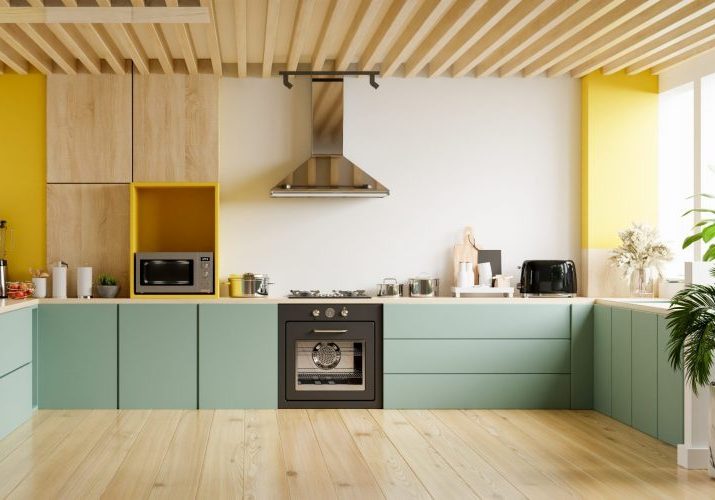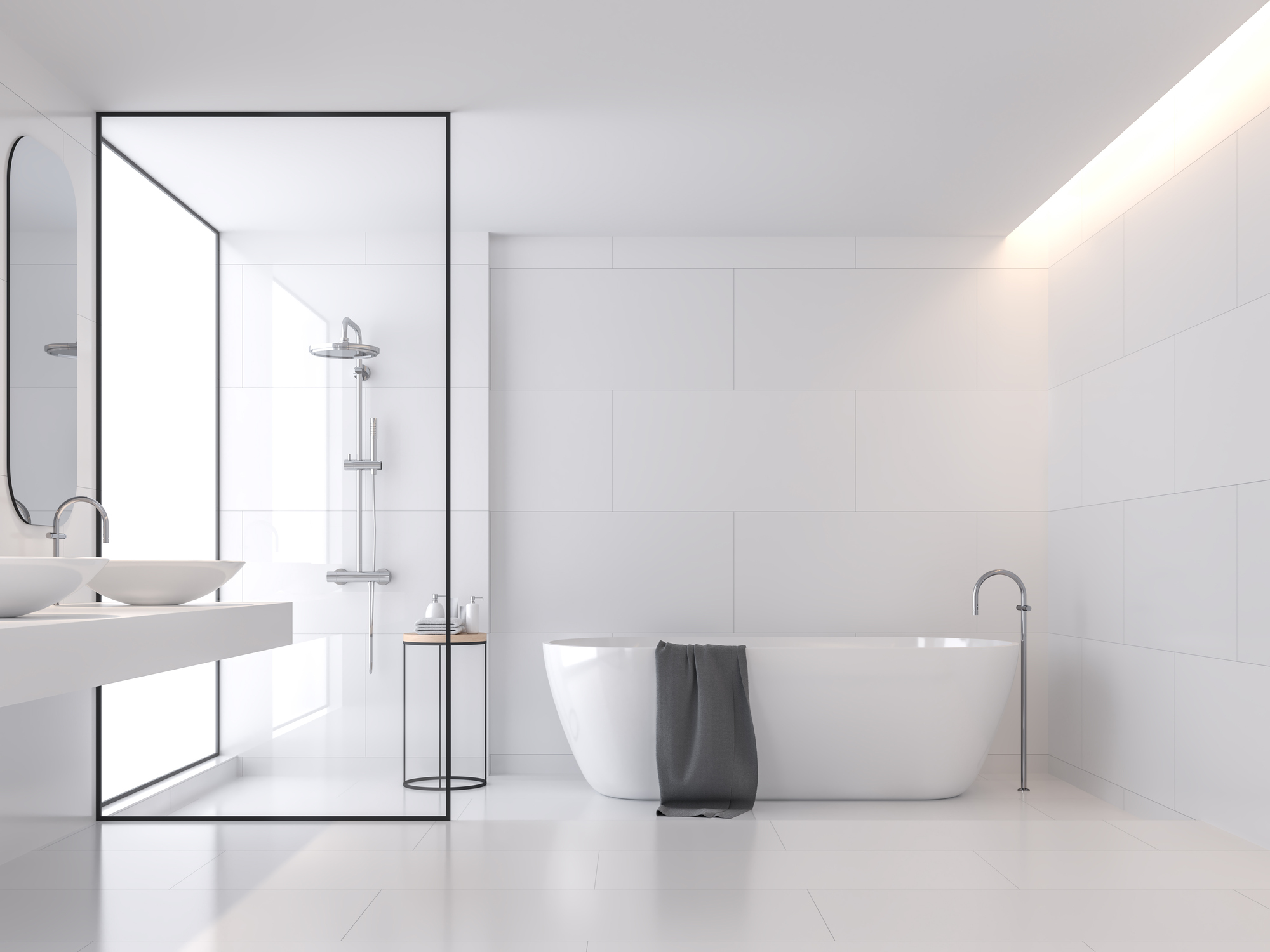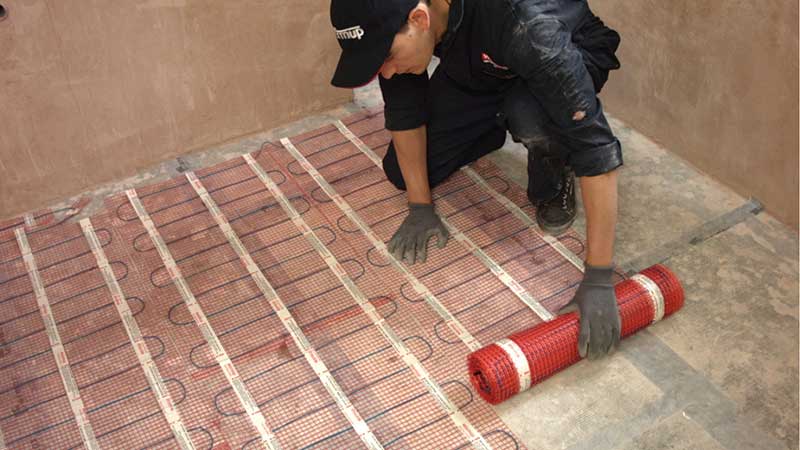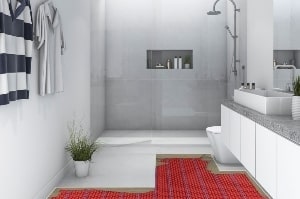
Radiant Floor Heating Costs
Radiant floor heating offers an effective, energy-efficient solution that can help homeowners and businesses save hundreds on their energy bills. Unlike traditional systems, radiant floor heating systems rely on thermal energy and electromagnetic waves to create heat from the ground up. These waves heat objects—not the air — and result in comfortable, consistent temperatures. Want to learn more about radiant floor heating and how much radiant floor heating costs? We’ll tell you below!
Find out everything you need to know
Learn below more about the costs involved in underfloor heating consisting of the cost of a Warmup system, the estimated installation cost, and the running costs.
System Cost
We offer a range of electric floor heating systems at different price points. Learn more what to take into consideration when choosing your system below.
Installation Costs
Any underfloor heating project also involves the cost of getting the system installed. Find out more here.
Running Costs
Underfloor Heating can offer substantially lower running costs compared to traditional central heating. Learn more about the running costs here.

The Cost of Underfloor Heating Systems from Warmup
Warmup’s 30 years of research and development into radiant floor heating has led to some of the best electric radiant heating systems on the market. Whether you’re renovating your bathroom and want heated floors or are looking to heat your home, Warmup has a system for you. Learn more about these systems below.
However, subfloor type and floor covering are two factors that help determine which system is best for you. Read our Floor Covering Guide to see what flooring works well with each system.

With Warmup, you have many options that cover different price points and work with different subfloors and coverings.
The StickyMat and DCM-PRO Uncoupling System are two options that are compatible with many floor types and are great for places like kitchens and living rooms. No matter what system you choose, each Warmup system is competitively priced and perfect for new construction and renovations.
Check out our online quotation tool for a more personalized underfloor heating price. With this tool, you can input your project details: the floor size, your desired floor covering, the planned usage, and your heating source. Then, you’ll get an instant quote for your project, with three different pricing options, from the least costly to the most extensive and costly systems.

Cost of Installing Radiant Floor Heating
Although Warmup does not offer installation of our underfloor heating systems, your radiant heating installation cost will depend on your chosen system and who you hire to handle the installation.
Installation is typically the most expensive part, especially because you want to hire experienced professionals to ensure the job is done correctly. Otherwise, you can find yourself spending double the price. You also have to keep in mind the system you choose determines what sort of work needs to be done.

How Much Does It Cost to Run Radiant Floor Heating?
One of the benefits of underfloor heating is that it offers significantly lower running costs compared to traditional heating options. Why is there a lower underfloor heating running cost?
The reason is twofold: radiant systems heat up much faster and run at lower temperatures while providing more even and consistent heating.
But the exact electric radiant floor heating running costs vary depending on various factors, including:
- The System you Choose: Electricity often costs more than a gas-powered boiler.
- The Design of your Home: Open floor plans allow heat to be distributed more evenly.
- How Well Insulated It Is: The better the insulation is, the less heat is lost.
- Utility Costs: Electricity costs vary by state and region.
- How you Set Up your System: Smart thermostats and effective zoning and scheduling can save costs.
Take a look at the table below for more examples of potential running costs when using Warmup underfloor heating systems. You can also turn to our Running Costs Calculator for a more custom estimate of how much you’d save by installing Warmup.

Radiant Floor Heating Materials Costs:
When you’re looking at the cost of underfloor heating, the overall cost will include the necessary materials, which depend on the system.
Hydronic systems, for example, require a water heater or boiler system, the system’s tubing through which the water travels, and a compatible thermostat. Electrical systems, on the other hand, only require electrical cables or mats and a thermostat. Generally, here are the material costs to expect:
Insulation is another underfloor heating cost that you could expect to endure if you want to make your home even more efficient.
Running Costs Table Information
For these figures, we assumed an energy price of 17.41c/kWh and using the system for 6 months (182 days) on a 3/8″ (10mm) Warmup Insulation Boards. Avg. Running cost after an initial heat-up period is 1.1754 c/sqft/h

The Cost of Underfloor Heating Flooring Materials
The flooring material you choose can also have a significant impact on your radiant floor heating costs. This is because some materials offer more heat outputs than others and retain heat better.
Here are some flooring materials to consider and their associated costs with underfloor heating:
Ceramic
Ceramic tiles are a durable, long-lasting option that is available in many colors and is resistant to water and stains. However, they can be cooler to the touch still and grout is often difficult to clean and maintain.
Wood
Wood offers a warm, natural look that adds to your home value and can be refinished for a fresh appearance. It does require regular maintenance and can warp and discolor over time, especially with water exposure.
Composite Flooring
Composite is more durable and water resistant than traditional wood flooring, is much easier to maintain, and comes in a variety of designs. While more water resistant, it is still not entirely immune to damage and cannot be refinished.
Concrete
Concrete is an extremely durable option that does well in wet environments and is resistant to mold and mildew. It offers a more modern look but also holds heat well. It is a harder floor option, and cooler underfoot.

Improving Energy Efficiency With Radiant Floor Heating
You can save even more on underfloor heating costs by pairing your Warmup system with a
Smart Thermostat, further lowering the underfloor heating running cost. Our 7iE Smart Thermostat uses advanced technology that helps prevent energy wastage, ensuring your system only runs when you need it, and only in the rooms you’re currently using.
Buying a smart thermostat also means you have remote access to your system and the energy-monitoring functionalities, no matter where you are via the MyHeating App.
Ultralight Insulation means faster heat-up times and less heat loss.
Adding insulation under your radiant heating system is another way to cut down on operational costs and minimize downward heat loss.
Warmup’s Ultralight Insulation Boards are designed specifically for use with our systems. The 4-in-1 design of the boards offers insulating, heat-spreading, decoupling, and acoustic properties.
With these boards, your system will heat more evenly and spread 30 percent faster.

Our Research and Development Center
We are a company dedicated to the research and development of underfloor heating systems. That dedication means we are always striving to improve and make our systems the most energy—and cost-efficient they can be.
Our Research Center is always hard at work, using our 25 years of experience to find new and innovative ideas to make heating your home cheaper, more efficient, and better for the environment.
Our Post-Occupancy Monitored Housing Program works to predict the future of energy usage and the associated costs, while also working to ensure you get the best deal when it comes to the cost of underfloor heating.
Use Warmup Your Radiant Floor Heating
Although radiant floor heating costs are dependent on a variety of factors, it’s important to keep in mind that, in terms of longevity, radiant floor heating is one of your best options.
At Warmup, we provide our customers the ability to access underfloor heating systems that they can use throughout their home whether it’s the bathroom, living room, basement, or garage. In fact, we even have a variety of outdoor heating systems for driveways, walkways, and sidewalks.
If you’re interested in learning more about our indoor and outdoor radiant heating systems, contact us today to learn more.
FAQs
Is underfloor heating expensive to run? / How much does underfloor heating cost?
The cost of running underfloor heating depends on factors such as the energy source, whether it is electric underfloor heating or water underfloor heating system, your energy usage and your home’s insulation levels. Generally, underfloor heating can be very cost-effective, especially when installed with good quality insulation and Smart controls. For more specific information on UFH running costs, use our running cost calculator or get a quote!
Is underfloor heating efficient?
Yes, underfloor heating is known for its efficiency. It provides even heat distribution across the floor, which can lead to reduced energy consumption and more consistent room temperatures compared to traditional heating methods.
How much does it cost to install underfloor heating?
The installation cost of underfloor heating depends on the system type, the size of the project, the complexity of the installation and your location. Labor costs can range from between $100 to $300 a day for a qualified UFH installer. For an accurate quote, please contact us or use our installation cost estimator.
Is underfloor heating cheaper than radiators?
Underfloor heating can be more cost-effective than radiators in the long run due to its radiant heat technology which improves energy efficiency and provides an even heat distribution. UFH could lead to lower energy bills and better comfort. Find out more about the differences between radiators and UFH systems in our expert guide. Underfloor Heating vs. Radiators.
Which is cheaper to run electric or water underfloor heating?
Water-based underfloor heating systems are generally cheaper to run than electric systems. This is due to the cheaper costs of fuel and their enhanced energy performance, especially when used with a more sustainable heat source such as a heat pump. However, electric systems can be less expensive to install. For a detailed comparison based on your circumstances, please use our running cost comparison tool. For more information, read our blog on Electric Underfloor Heating vs. Water Underfloor Heating.
From our Blog

Bathroom Underfloor Heating Cost
In this article we’ll give you a good understanding of the initial installation costs, running costs and the long-term savings of heating your bathroom with an underfloor heating system.

Best Flooring for Floor Heating
Whether you’re renovating or choosing flooring for a new build, we outline in this article what you need to know about different flooring for underfloor heating.

Pros and Cons of Floor Heating
This blog post discusses the advantages and disadvantages of underfloor heating. Wondering whether installing a UFH system is right for you? Find out here.

Get a Free Instant Quote Today
Transform the way you heat your home with Warmup, the world’s best-selling floor heating brand.
![Thumbnail [200x250]](/wp-content/uploads/Indoor-Systems-Page-Image.png)
![Thumbnail [200x250]](/wp-content/uploads/image-13.png)
![Thumbnail [200x250]](/wp-content/uploads/Projects-Image.png)